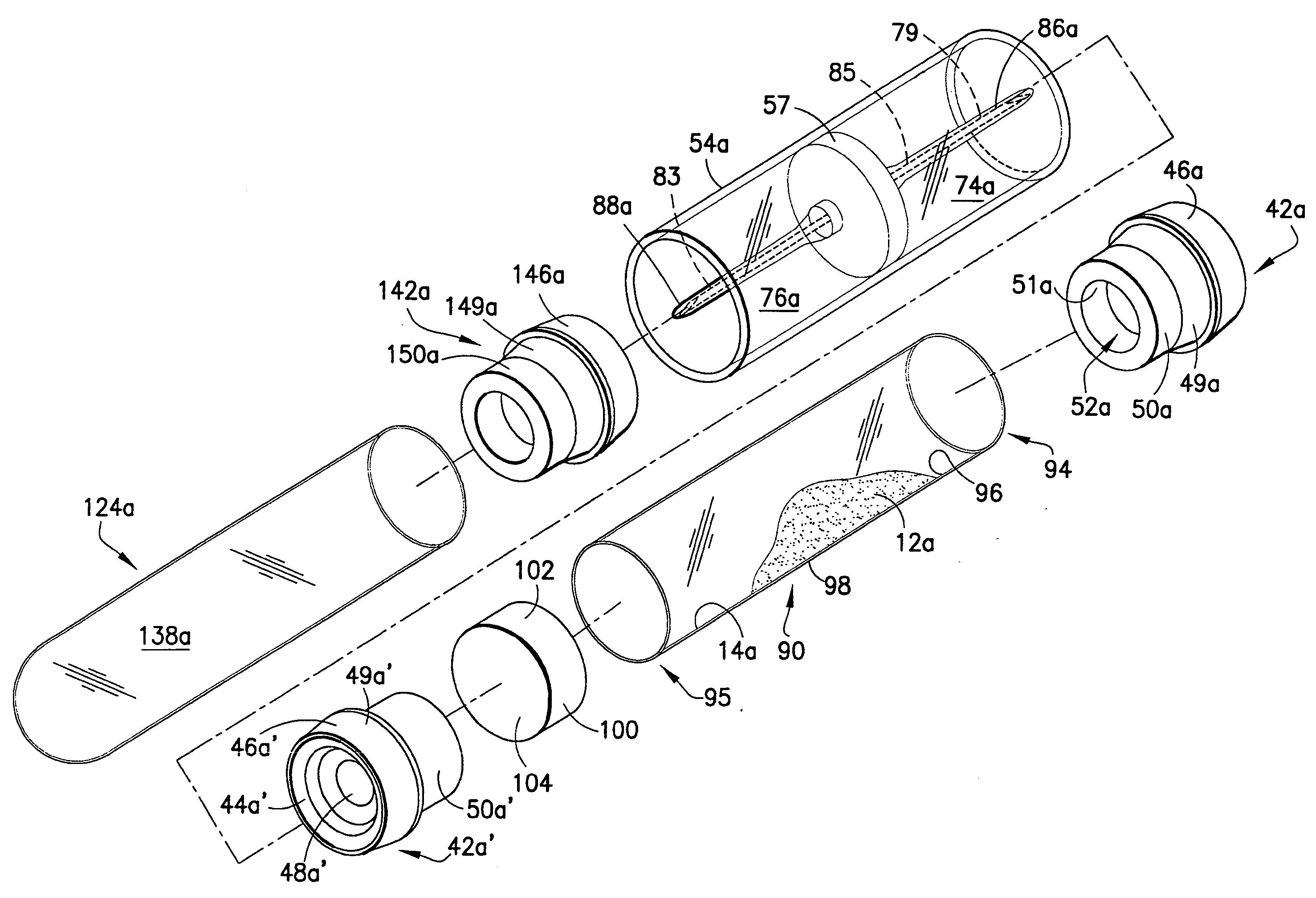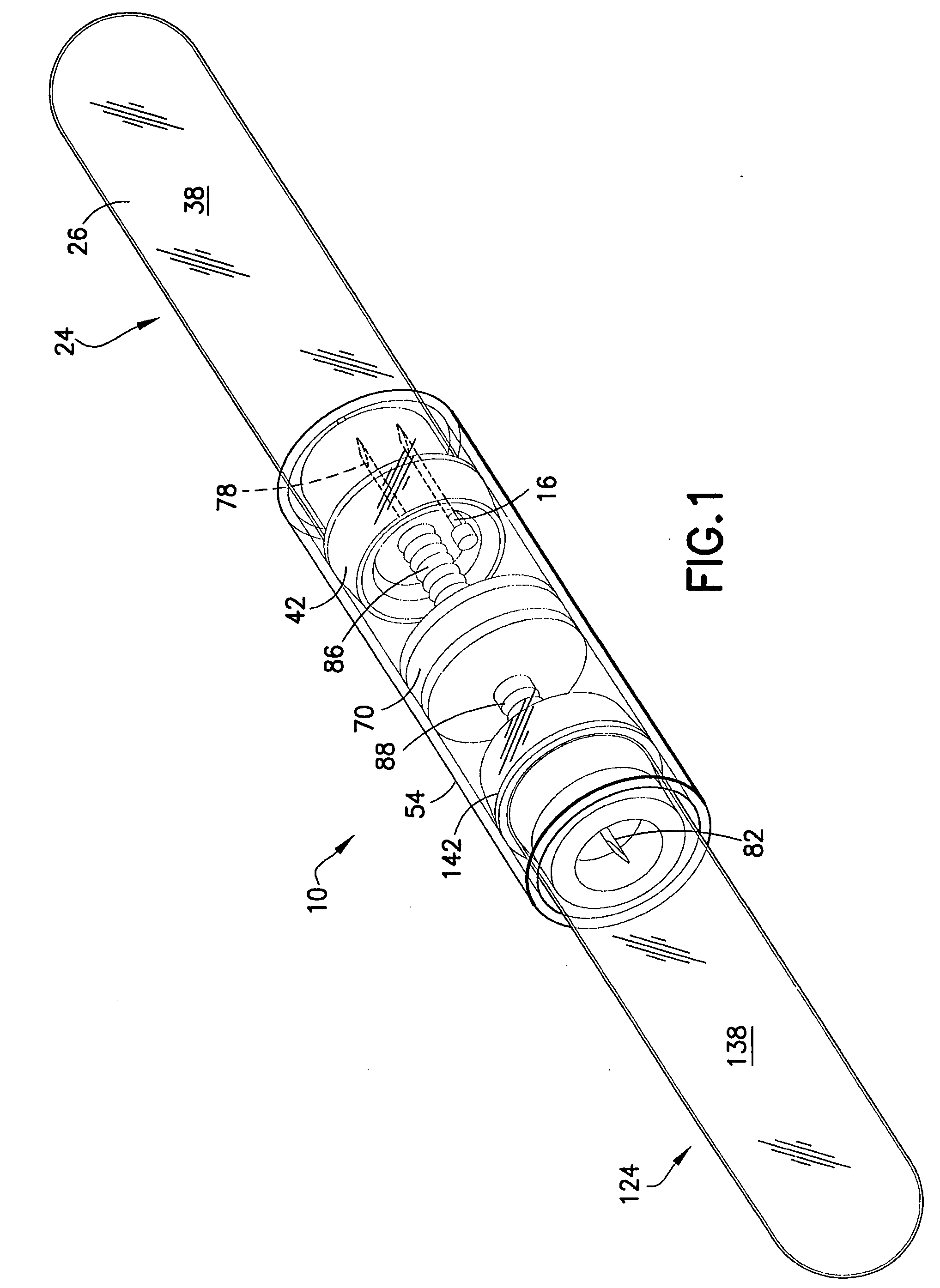Plasma on demand tube
a plasma tube and plasma technology, applied in the field of plasma on demand tube, can solve the problems of inadequate vacuum force between the upstream tube and downstream tube, blood cells clogging the filter, and the vacuum force generated by the evacuated device is not adequate to draw plasma from a collected blood sample, so as to achieve convenient use and less prone to clogging with aggregated blood cells
- Summary
- Abstract
- Description
- Claims
- Application Information
AI Technical Summary
Benefits of technology
Problems solved by technology
Method used
Image
Examples
second embodiment
[0050] As shown in detail in FIGS. 4 through 6, in the present invention, collection tube 90 comprises a hollow cylindrical tube including generally cylindrical tubular wall 92 extending between a first open end 94 and a second open end 95. First and second open ends 94 and 95 are hermetically-sealed with rubber stoppers 42a and 42a′, respectively, such as rubber stopper 42 as previously described herein. Tubular wall 92 has interior surface 96 and exterior surface 98. Collection tube 90 is comprised of suitable material which is impermeable to gas and liquid, and is desirably made of glass or molded plastic. Optionally, vent needle 16a is provided for use with rubber stopper 42a of collection tube 90.
first embodiment
[0051] Similar to the previous first embodiment of primary tube 24, rubber stoppers 42a, 42a′ are hermetically sealed at circumferential surface 49a, 49a′ of depending portion 50a, 50a′ to interior surface 96 at the first open upstream end 94 and the second open downstream end 95 of collection tube 90.
[0052] Cylindrical porous filter 100 is positioned within collection tube 90 and affixed along circumferential surface 102 of filter 100 to interior surface 96 of collection tube 90. Porous filter 100 is positioned so that downstream surface 104 of filter 100 abuts up against depending portion 50a′ of downstream rubber stopper 42a′. Abutting porous filter 100 against downstream rubber stopper 42a′ encloses cavity 52a′ of depending portion 50a′ of rubber stopper 42a′. The interior surface 96 of collection tube 90 between interior surface 51a of cavity 52a of depending portion 50a of upstream rubber stopper 42a and upstream surface 106 of porous filter 100 define primary collection chamb...
PUM
| Property | Measurement | Unit |
|---|---|---|
| pore size | aaaaa | aaaaa |
| porosity size | aaaaa | aaaaa |
| pore size | aaaaa | aaaaa |
Abstract
Description
Claims
Application Information
 Login to View More
Login to View More - R&D
- Intellectual Property
- Life Sciences
- Materials
- Tech Scout
- Unparalleled Data Quality
- Higher Quality Content
- 60% Fewer Hallucinations
Browse by: Latest US Patents, China's latest patents, Technical Efficacy Thesaurus, Application Domain, Technology Topic, Popular Technical Reports.
© 2025 PatSnap. All rights reserved.Legal|Privacy policy|Modern Slavery Act Transparency Statement|Sitemap|About US| Contact US: help@patsnap.com



